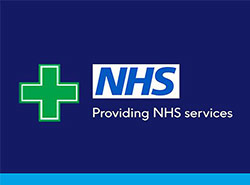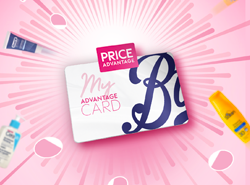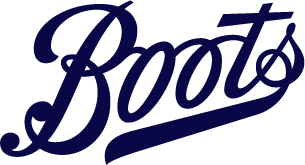Could what’s on your plate help support healthy blood pressure? We’ve put together a guide on everything you need to know about the DASH diet
If you’re looking for ways to take control of your health, particularly high blood pressure, you’ve probably heard of the DASH diet. Designed with heart health in mind, the Dietary Approaches to Stop Hypertension (DASH) diet could be an option for many people.
But before we dive in, it’s important to know that making any big changes to your diet should always be done in consultation with your GP, especially if you have health concerns like high blood pressure or if you’re taking any medicines.
Why does lowering blood pressure matter?
First things first – why is blood pressure such a big deal? Blood pressure is how hard your blood pushes against artery walls, and having high blood pressure means that your heart is working harder when pumping blood around your body. High blood pressure is usually considered to be 140/90mmHg or higher when checked by a healthcare professional.
High blood pressure, or hypertension, can often sneak up without obvious symptoms. But behind the scenes, it can cause some serious problems, including heart disease and stroke.
Getting your blood pressure checked is the only way to know whether you have high blood pressure. Most people who have it don’t actually know they have it.
You should get your blood pressure checked at a pharmacy or a GP surgery if:
- You think you might have high blood pressure
- You might be at risk of having high blood pressure
- You’re aged 40 or over and you haven’t had your blood pressure checked for more than five years
You can check your blood pressure by:
- Visiting your GP
- Using an at-home blood pressure monitor
- If you’re aged over 40 you can visit a Boots pharmacy for the NHS Blood Pressure Check Service* which is available in selected Boots pharmacies
- If you’re over 40, you can book a free Health MOT** which includes the NHS Blood Pressure Check Service* and an optional waist circumference and BMI check
Having high blood pressure doesn’t just impact your health – it can also affect your quality of life. Left untreated, it may lead to poor health, reduced mobility and other complications.
So, what can you do? Small, manageable steps, like adjusting your diet, can play a role in lowering your blood pressure. But remember, always speak to your GP if you’re concerned about your blood pressure or thinking about making big changes to your diet, especially if you have a health condition or you’re taking any medicines, including those to help manage high blood pressure.
What is the DASH diet?
The DASH diet is about balance and making heart-friendly food choices. Unlike some diets that cut out entire food groups, the DASH diet focuses on including plenty of nutritious foods while reducing the things that can push blood pressure and cholesterol up, like sodium (salt) and saturated fats.
The basics include:
- Plenty of vegetables and fruits
- Low-fat dairy products
- Wholegrains
- Lean proteins like fish and poultry, with limited red meats
- Nuts, seeds and legumes several times a week
- Minimal sweets, added sugars and sugary drinks
- Reduced salt
The DASH diet is also lower in saturated fats, cholesterol and sodium (salt) while being richer in potassium, magnesium, calcium and fibre.
Sodium & the DASH Diet
One of the key components of the DASH diet is reducing sodium (salt) intake. For many, the goal is to stay under 2,300mg of sodium per day (about 5g or a teaspoon of salt). Gradual changes like using herbs and spices instead of salt can make the transition easier while keeping your meals full of flavour.
Building healthy habits around the DASH diet
The DASH diet can work well when combined with other heart-healthy habits like:
- Staying active. Aim for at least 150 minutes of moderate exercise each week, like brisk walking or cycling
- Limiting alcohol
- Quitting smoking
- Managing everyday stress. Practise relaxation techniques, mindfulness or activities that help you unwind. Stress can affect blood pressure, so finding ways to reduce it is important
- Taking medications as prescribed. If your doctor has prescribed blood pressure medications, make sure to follow their instructions carefully
How can the DASH diet help with high blood pressure?
The DASH diet can help with high blood pressure by focusing on nutrient-rich foods that support heart health.
A number of studies support the DASH diet’s effectiveness, showing that it can help to lower blood pressure. However, everyone’s body is different. While some people may experience improvements, others might find the DASH diet is just one part of a larger solution.
Is the DASH diet suitable for me?
The DASH diet isn’t just about blood pressure, it can also contribute to heart health and overall wellness. But deciding whether it’s suitable for you depends on your individual needs and goals.
One important thing to keep in mind is that the DASH diet isn’t a quick fix. It’s designed to work as part of a long-term lifestyle change, focusing on gradual, sustainable improvements to your eating habits.
Before making any changes, it’s important to speak to your GP, especially if you’re managing high blood pressure, other health conditions or you’re taking any medication. Your doctor can provide advice and ensure the DASH diet complements your existing health plan.
What can I eat on the DASH diet?
A typical day on the DASH diet might include:
- A warm bowl of porridge topped with fresh berries and a sprinkle of seeds for breakfast
- For lunch, a salad with grilled chicken, quinoa and a tangy lemon-tahini dressing that can help to keep you satisfied
- Grilled salmon served with roasted sweet potatoes and steamed broccoli – a comforting and balanced meal
For snacks, options like hummus with carrot sticks or a handful of unsalted nuts are both nutritious and satisfying. The goal is balance, providing your body with the nutrients it needs while allowing for occasional treats in moderation.
Thinking about the DASH diet?
Starting the DASH diet can be a step towards better heart health. However, the diet can feel a little complex at first, especially if you’re managing conditions like high blood pressure. This is where seeking support from a healthcare professional, like your GP or a registered dietitian, can be helpful.
That said, the general principles of the DASH diet can benefit most people. Reducing salt, eating more fruits and vegetables and choosing wholegrains are small, simple changes that can make a difference to your overall health. For example, replacing salty snacks with unsalted nuts or adding an extra portion of vegetables to your meals are easy steps that align with the DASH diet’s recommendations.
If you’re considering the DASH diet, or if you’re experiencing symptoms of high blood pressure, it’s important to speak to your GP or a dietitian first. They can help you decide if this approach is right for you and give you guidance on making sustainable changes.
Remember, this isn’t about making dramatic shifts overnight, it’s about taking steady, positive steps toward improving your heart health.
Frequently asked questions
What do you eat on the DASH diet?
The DASH diet is all about balance and variety, focusing on nutrient-rich foods that support heart health. This can include foods like:
- Fruits and vegetables. Aim for four to five servings of each per day
- Wholegrains. Go for options like brown rice, oats or wholemeal bread
- Lean proteins, including fish, poultry or plant-based proteins like beans and lentils
- Low-fat dairy. Choose milk, yogurt or cheese with reduced fat
- Healthy fats like small amounts of nuts, seeds or avocados
The focus is on fresh, whole foods while keeping sodium (salt), saturated fats and added sugars to a minimum.
Are eggs okay on the DASH diet?
Yes, eggs can be part of the DASH diet when enjoyed in moderation. They’re a good source of protein and other nutrients, making them a nutritious option for meals.
For a healthier option, try boiling or poaching your eggs rather than frying, and pair them with wholegrains and veg for a balanced meal. If you have specific dietary concerns, it’s important to check with your GP or dietitian.
What is the number one vegetable to lower blood pressure?
There isn’t a single vegetable that will lower blood pressure, but eating a variety of vegetables as part of a healthy balanced diet can help support your heart health.
Rather than focusing on just one food, aim to eat a colourful mix of vegetables each day. And if you’re managing high blood pressure or taking medication, make sure to speak to your GP before making changes to your diet, especially when it comes to potassium, as too much can be harmful.
If you’re concerned about your blood pressure, make sure to speak with your GP for advice.
What is the number one fruit to lower blood pressure?
There’s no single fruit for lowering blood pressure but including a variety of fruits in your diet can help support your heart health.
Bananas are often mentioned because they contain potassium, which can help maintain normal blood pressure by balancing sodium levels.
The DASH diet recommends four to five servings of fruit per day to maximise these benefits. If you have high blood pressure or are on medication, check with your GP before making dietary changes.







